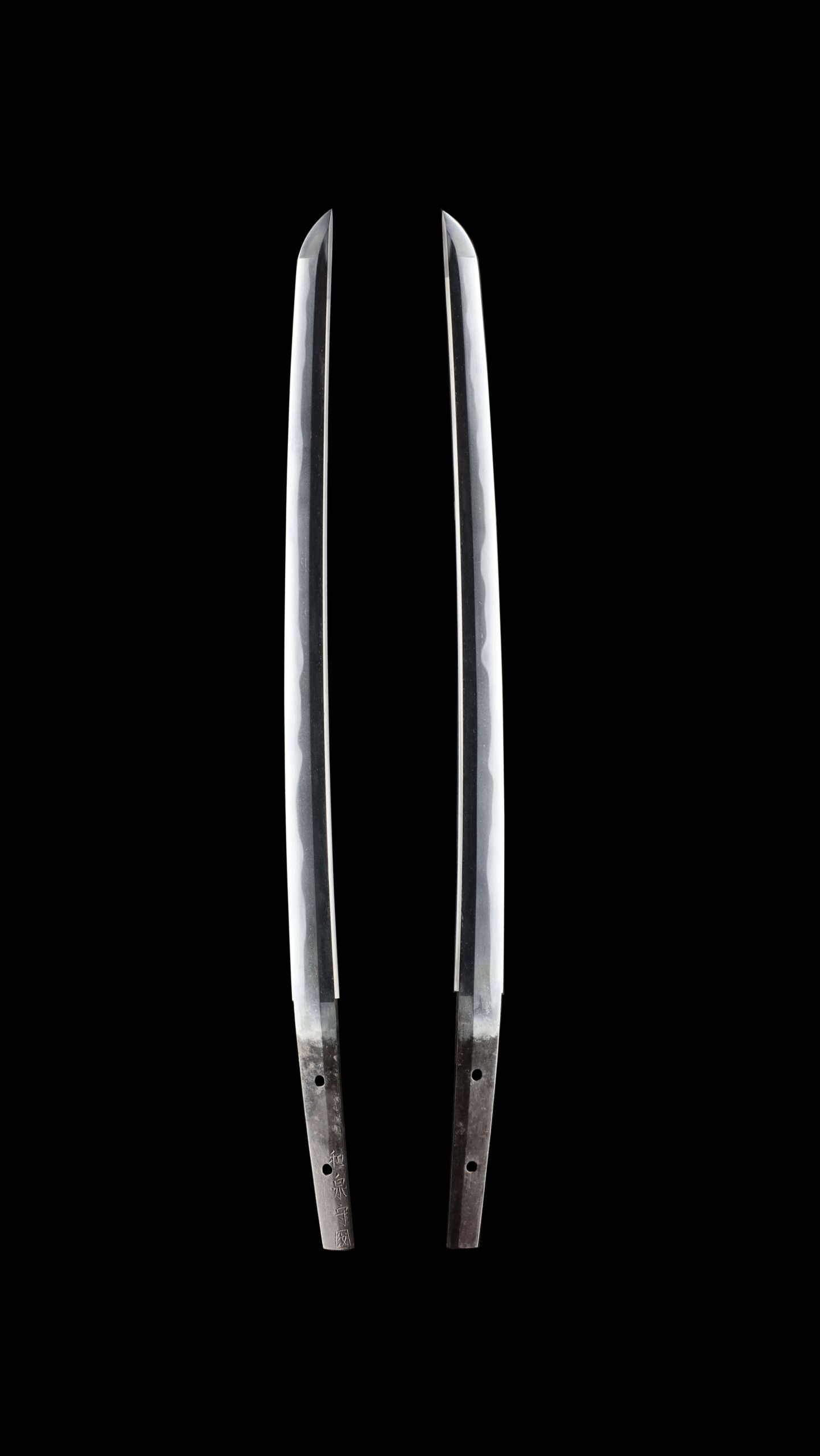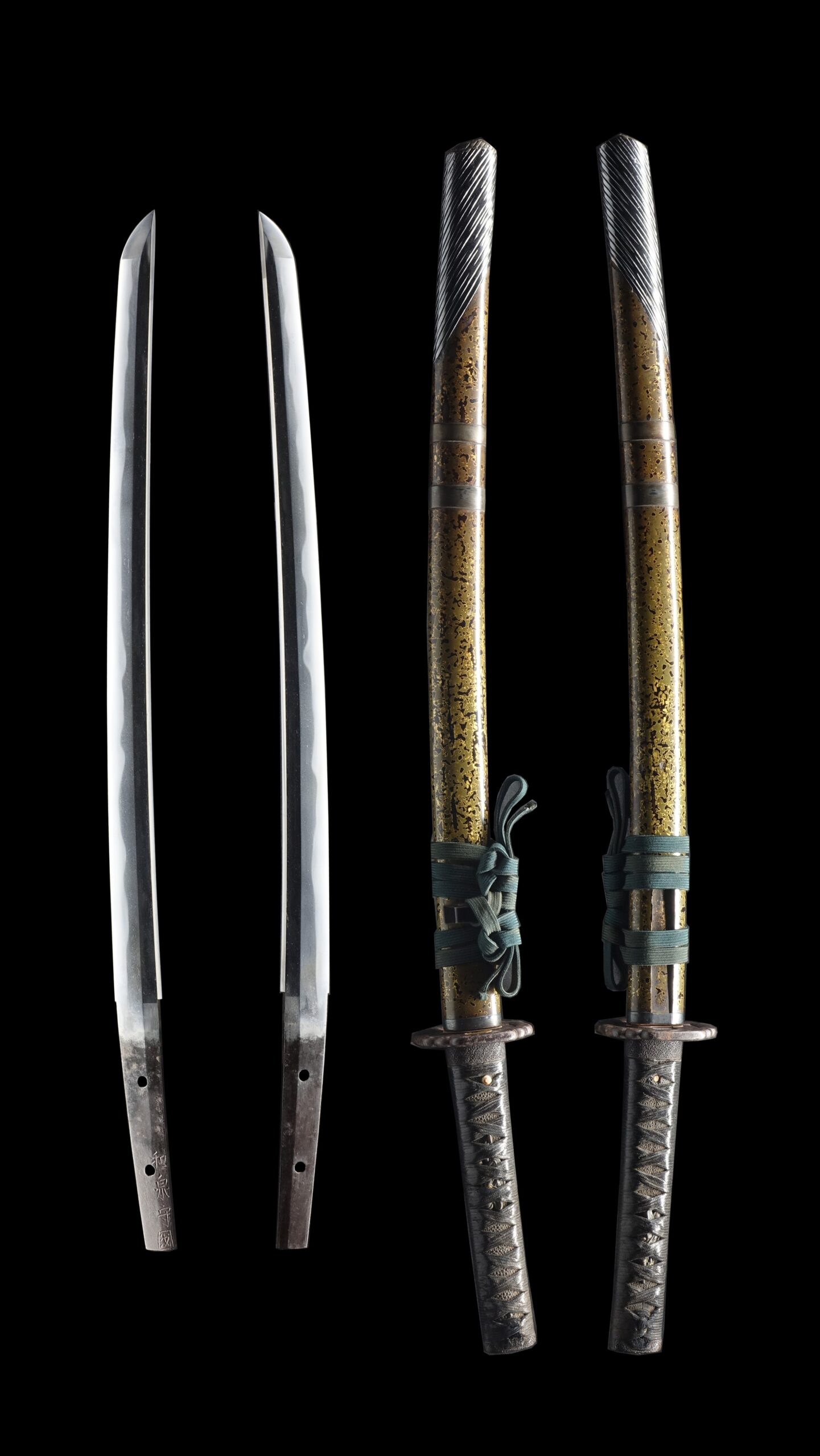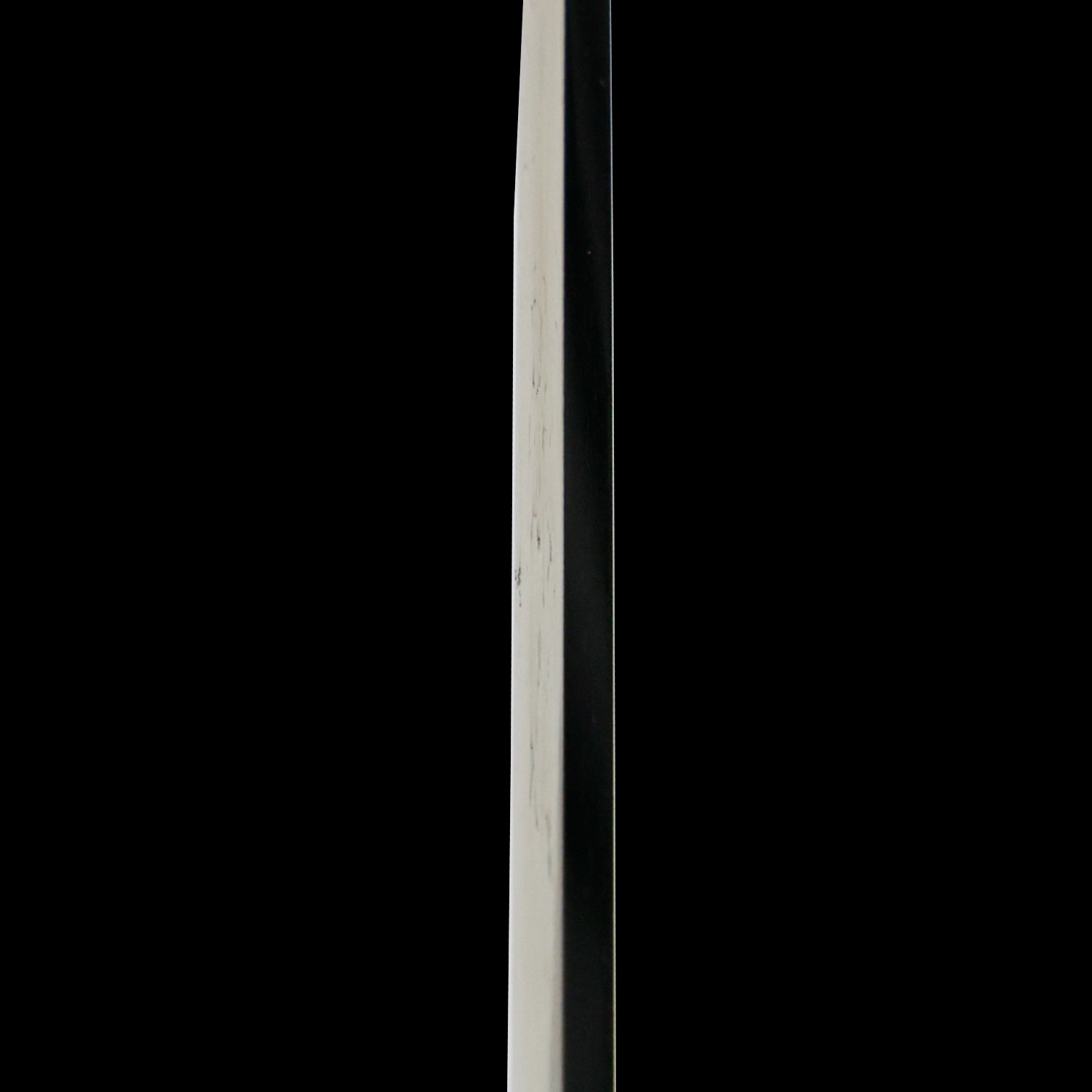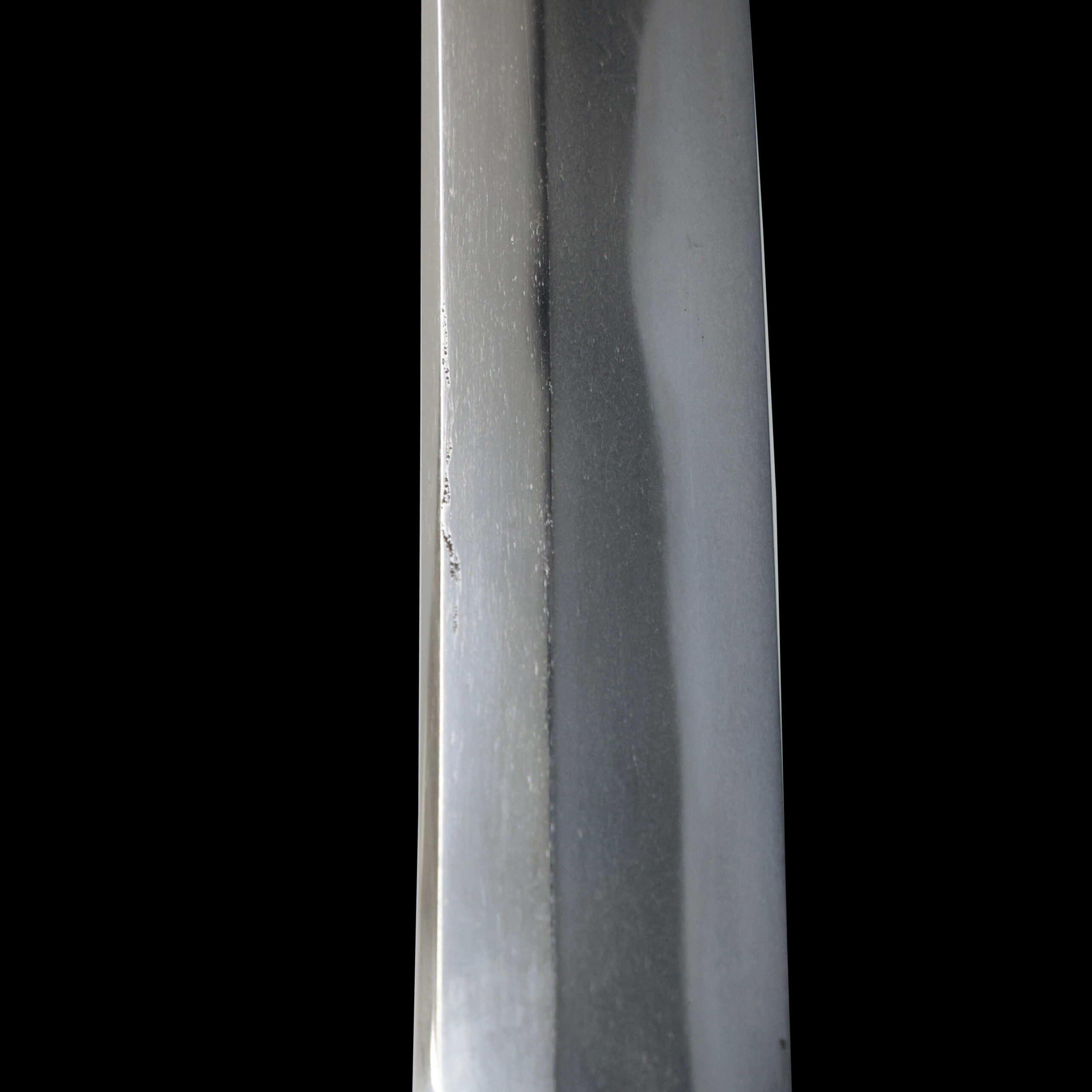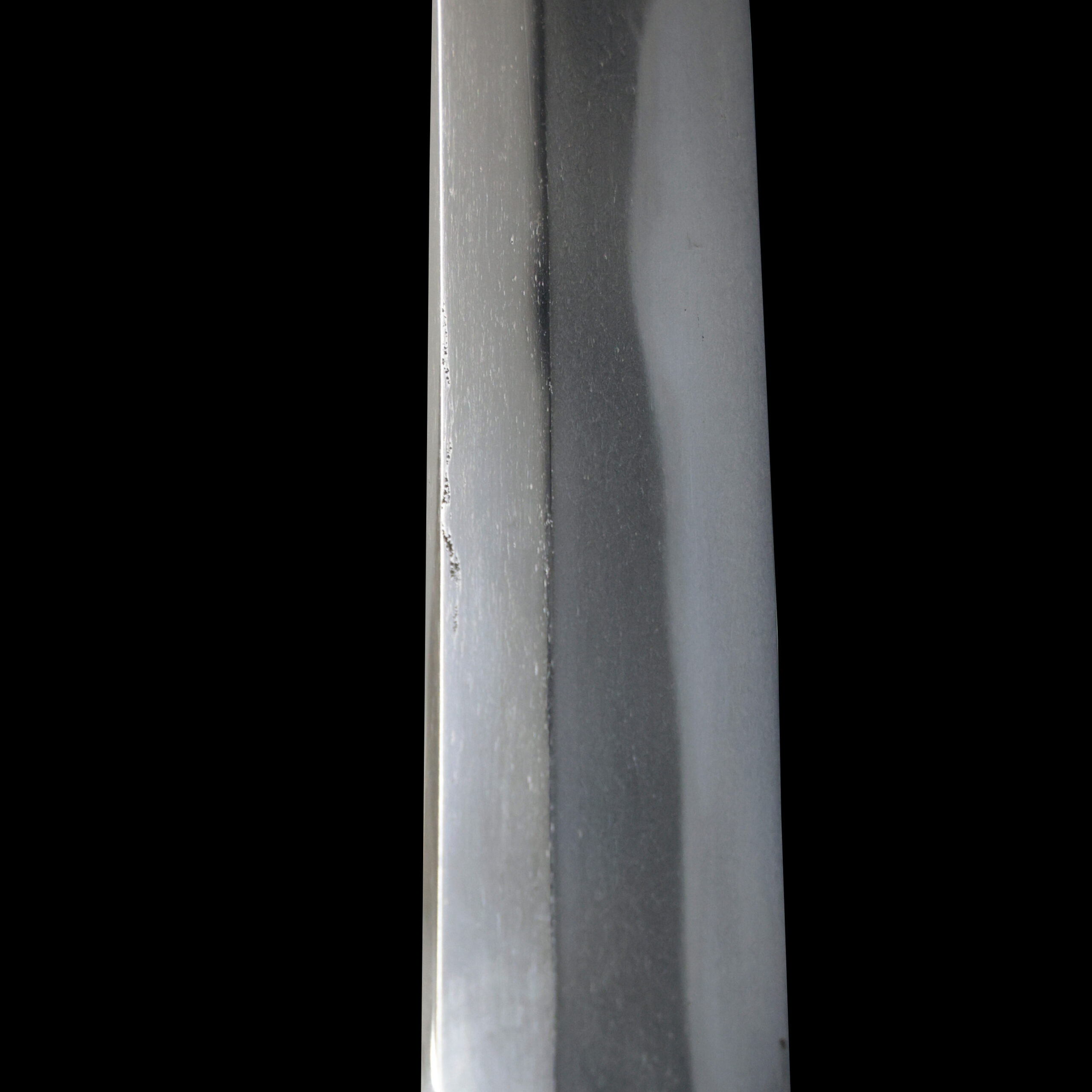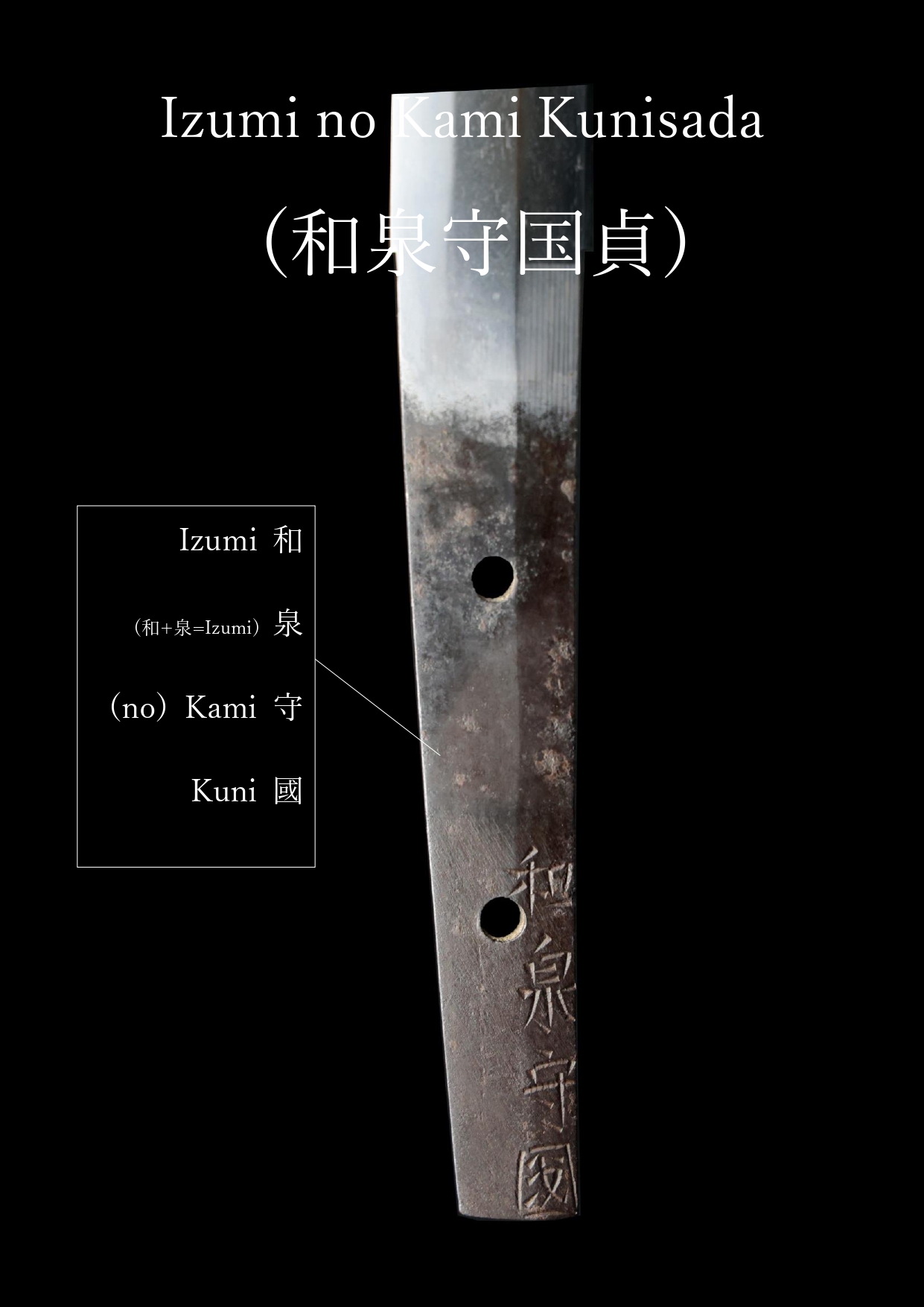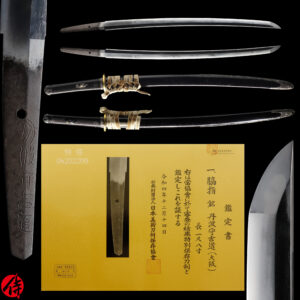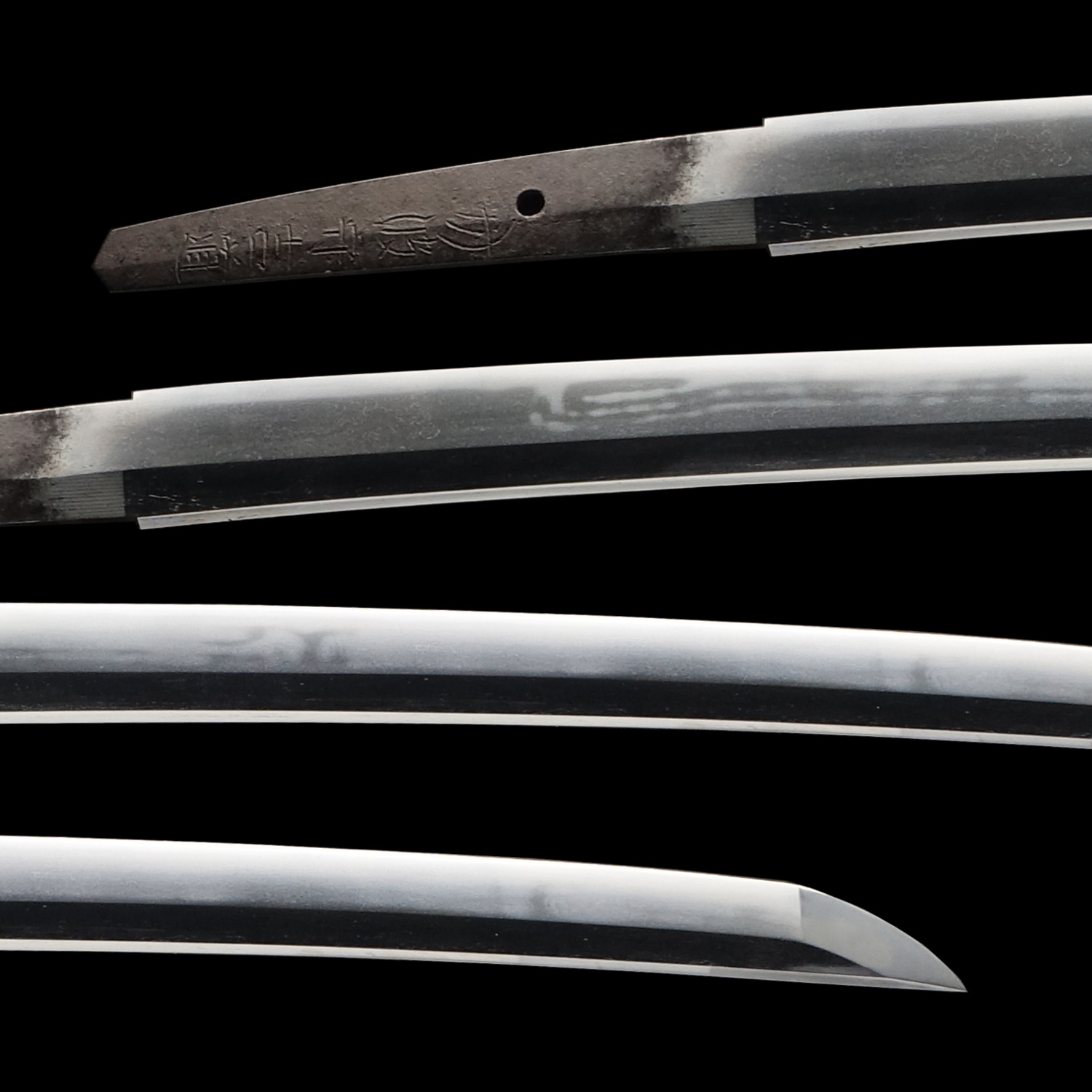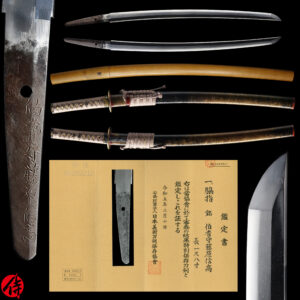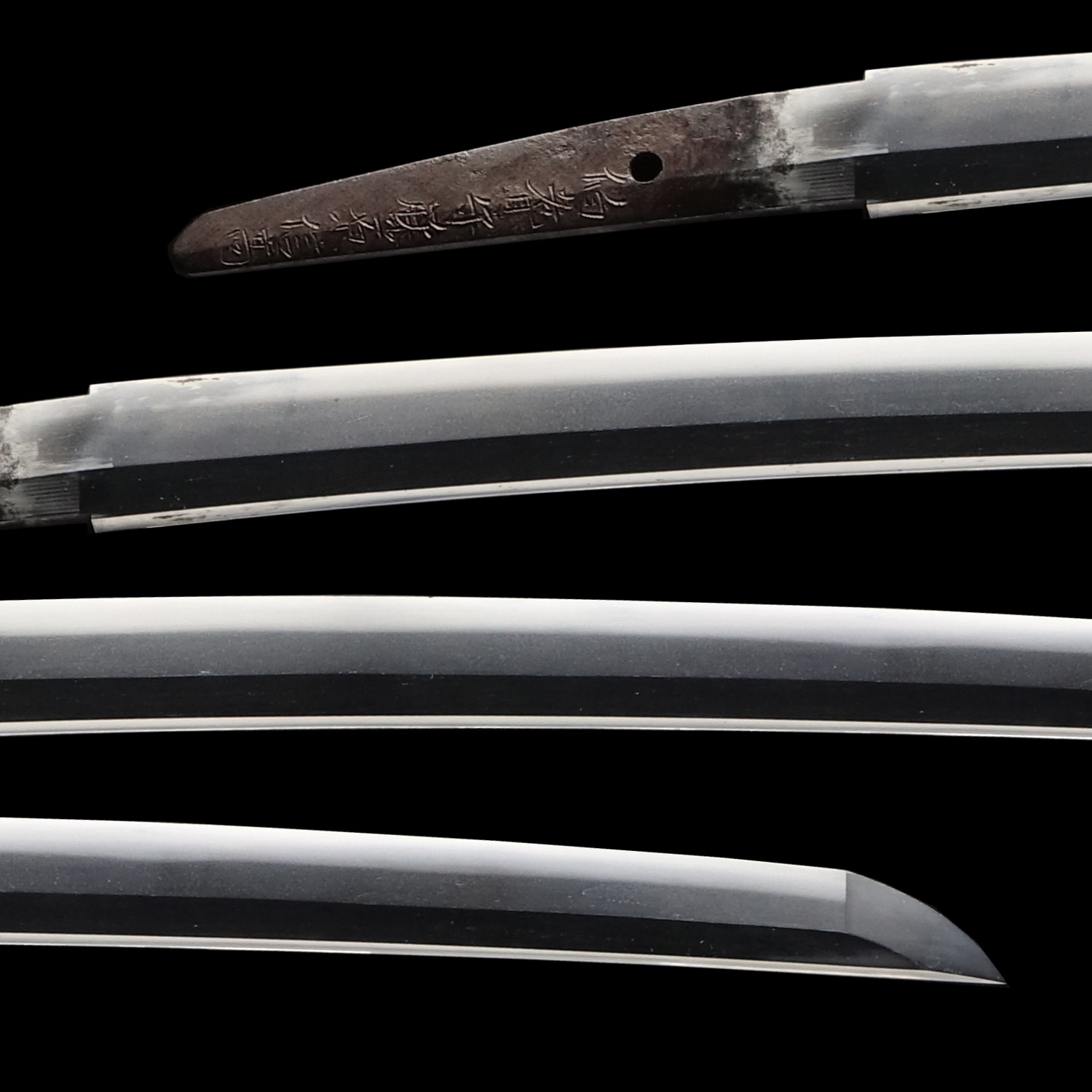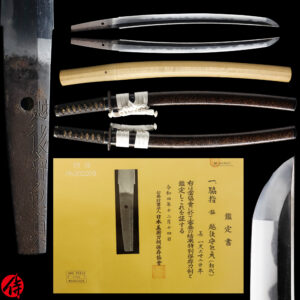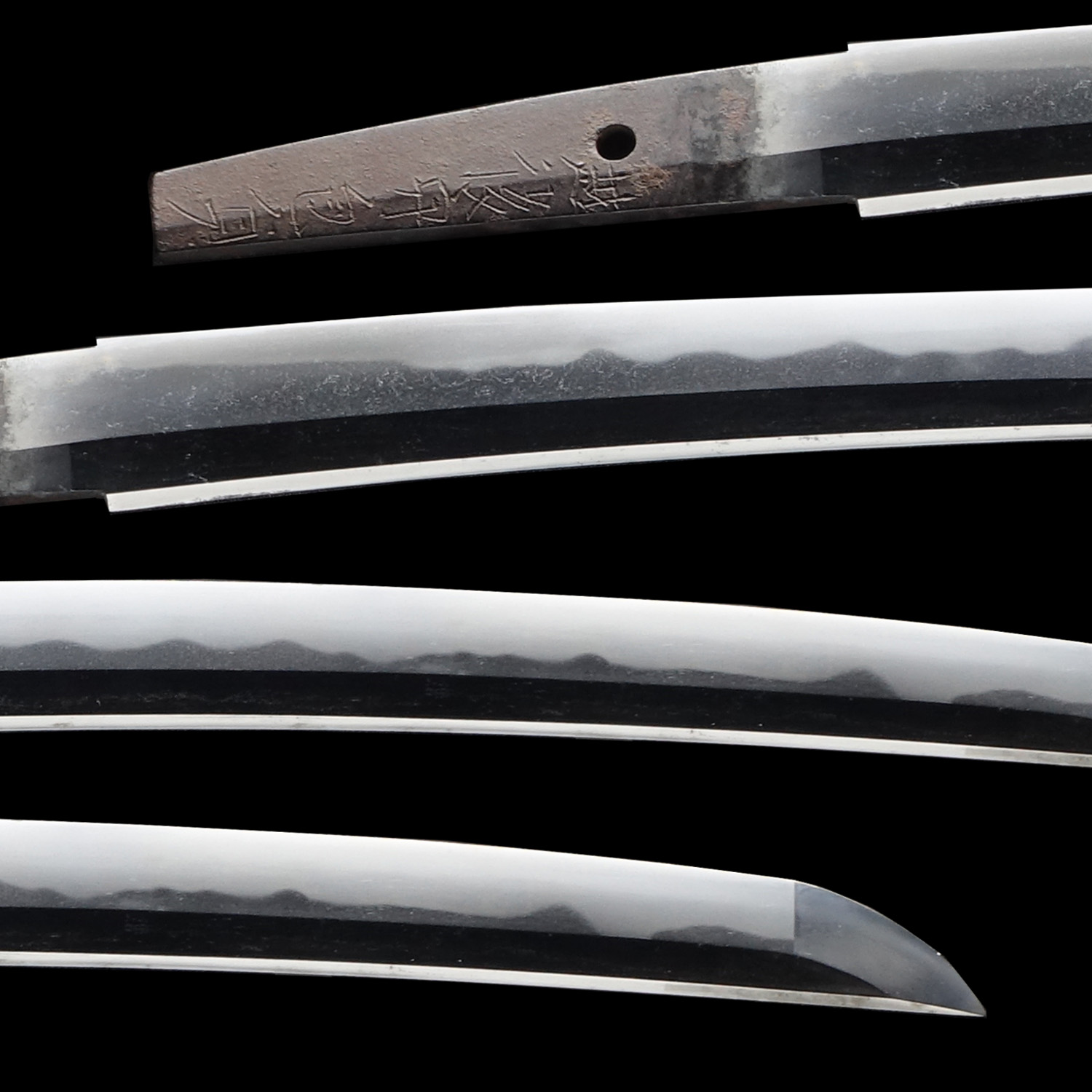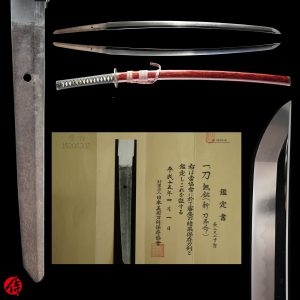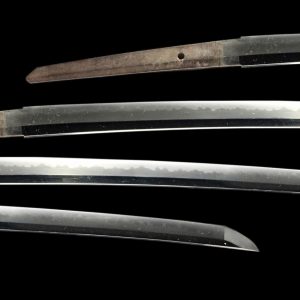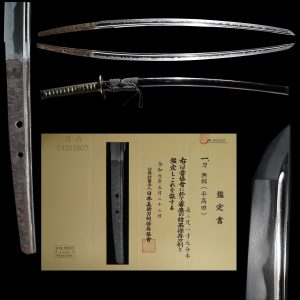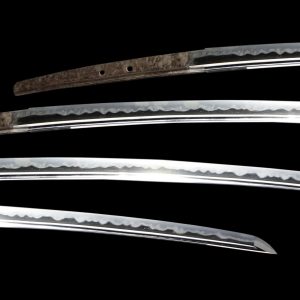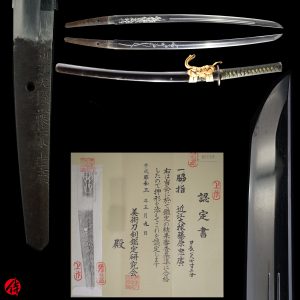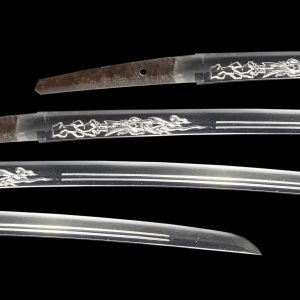Antique Japanese Sword Wakizashi Signed by Kunisada with NBTHK Hozon Certificate
【Description】
Summary
This blade was signed by Izumi no Kami Kunisada (和泉守国貞) while Sada (貞) part was cut due to Suriage (size adjustment) in the past. According to its NBTHK appraisal, it was made by the second-gen Izumi no Kami Kunisada (二代和泉守国貞). Kunisada (国貞) split the popularity of the Osaka Shinto (大阪新刀) with the master Sukehiro (助広). He was born as the second son of Izumi no Kami Kunisada (和泉守国貞), who is famous as the founder of Osaka Shinto, and known as the second-gen Kunisada.
By 1650 (3rd year of Keian; 慶安), the second generation Kunisada had already completed many works on behalf of his father because of his old age. And in 1652 (the first year of Jouo; 承応), he received the title of Izumi no Kami (和泉守). In 1661 (4th year of Manji, 万治), the Imperial Court granted permission to use the 16-leaved chrysanthemum crest.
After that, Kunisada carved his engraved inscription as “Inoue Izumi no Kami Shinkai (井上和泉守真改),” but changed it to “Inoue Shinkai (井上真改)” from August 1672 (12th year of Kanubun; 寛文). Since his father also used the name Kunisada, the swords of the first Kunisada are sometimes called the Oya Kunisada (親国貞), and the sword that the second Kunisada forged are called the Shinkai Kunisada (真改国貞) to distinguish between the two.
Izumi no Kami Kunisada (His father)
Kunisada, also known as Inoue Yoshihiro, was born in the 17th year of Tensho era (1589) in the southern part of Miyazaki prefecture (Kyushu island). Later on, he moved to Kyoto and became an apprentice of Horikawa Kunihiro, one of the most famous swordsmiths in the early Edo period (Early 17th century). He also learned the sword-forging technique from a senior apprentice, Echigo no Kami Kunitomo. Kunisada moved to Osaka in 1620 after his master, Kunihiro, was deceased. He became an independent swordsmith in Osaka city.
He was trusted by the third-gen head of Obi domain (today’s Miyazaki prefecture), Ito Sukehisa, and Kunisada was able to receive the title of Izuminoakami in 1623 because of Sukehisa’s support.
He is known as one of the most influential swordsmiths to make Osaka a famous place for sword-forging in the early Edo period. Osaka was the center of business back then. Many renowned swordsmiths moved to Osaka to meet the demand from high-class Samurais.
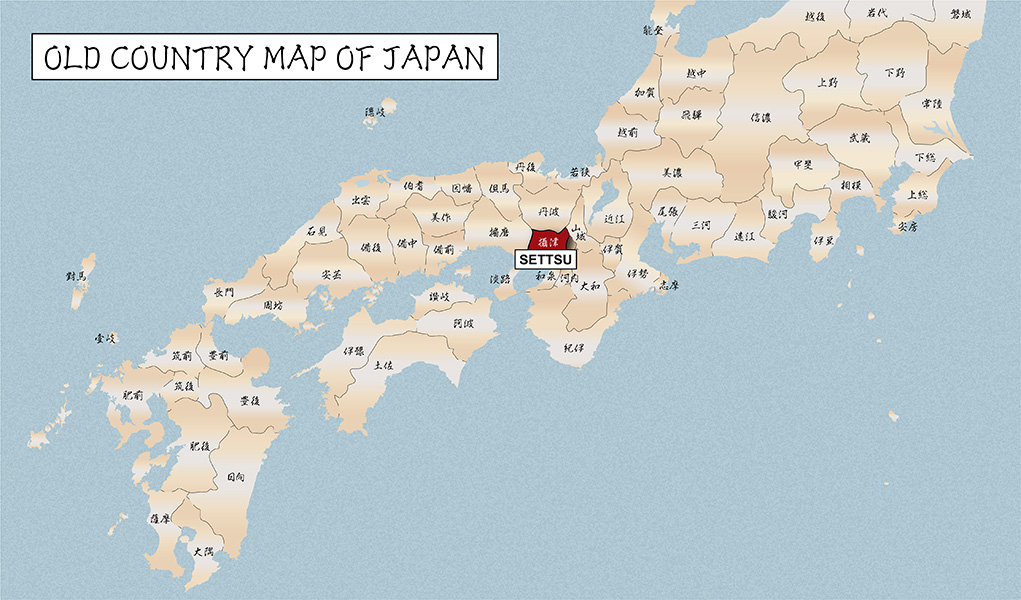
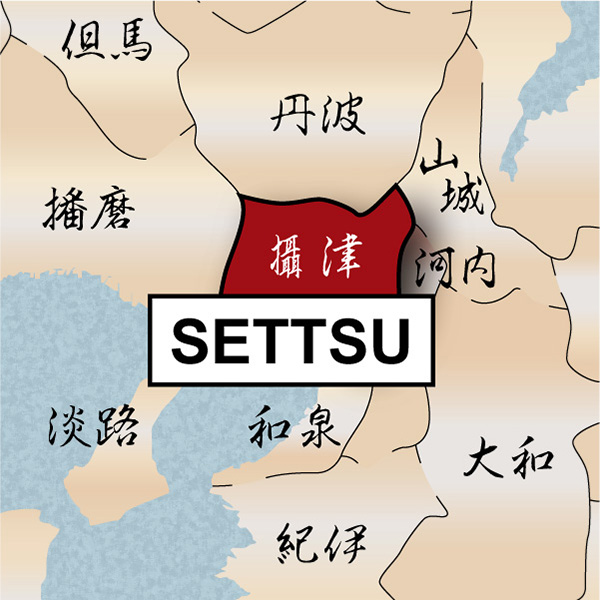
Osaka Shinto
The Shinto (新刀) is Japanese sword terminology referring to swords forged from 1596 to 1781. The blades made in the Osaka area during this period are called the Osaka Shinto (大阪新刀). There are many famous swordsmiths in this Osaka Shinto era. After Toyotomi Hideyoshi (豊臣 秀吉) built the Osaka castle, Osaka city flourished as a castle town and became the business center. Many swordsmiths moved to Osaka to look for better opportunities. They not only forged swords for those Samurai who lived in Osaka but also for feudal lords nationwide. Ikkanshi Tadatsuna (一竿子 忠綱, Awataguchi Ohmi no Kami Tadatsuna), Inoue Shinkai (井上 真改), and Tsuda Sukehiro (津田助広) are the most famous among many swordsmiths.
One of the most notable characteristics of Osaka Shinto is its beauty in Jigane (地鉄). Jigane is a visible steel surface pattern created by folding and hammering during the forging process, which made it possible by the location of Osaka. Osaka had close access to the production sites of the Tamahagane (玉鋼, special carbon steel to make Japanese swords). The swordsmiths residing in Osaka could get high-quality carbon steel from these sites.
This blade is appraised as a Hozon Token (保存刀剣) issued by NBTHK (Nihon Bijutsu Touken Hozon Kyokai:日本美術刀剣保存協会). This authentication paper was only given to authentic Japanese swords, well preserved and high quality with artistic value.
*Please keep in mind that there are a couple of Kitae Kizu on the blade. If you like to know the detailed condition, please feel free to contact us.
【Blade】
Cutting Edge Length(Nagasa):47.7 cm (18.7 inches)
Curvature(Sori):0.7 cm (0.27 inches)

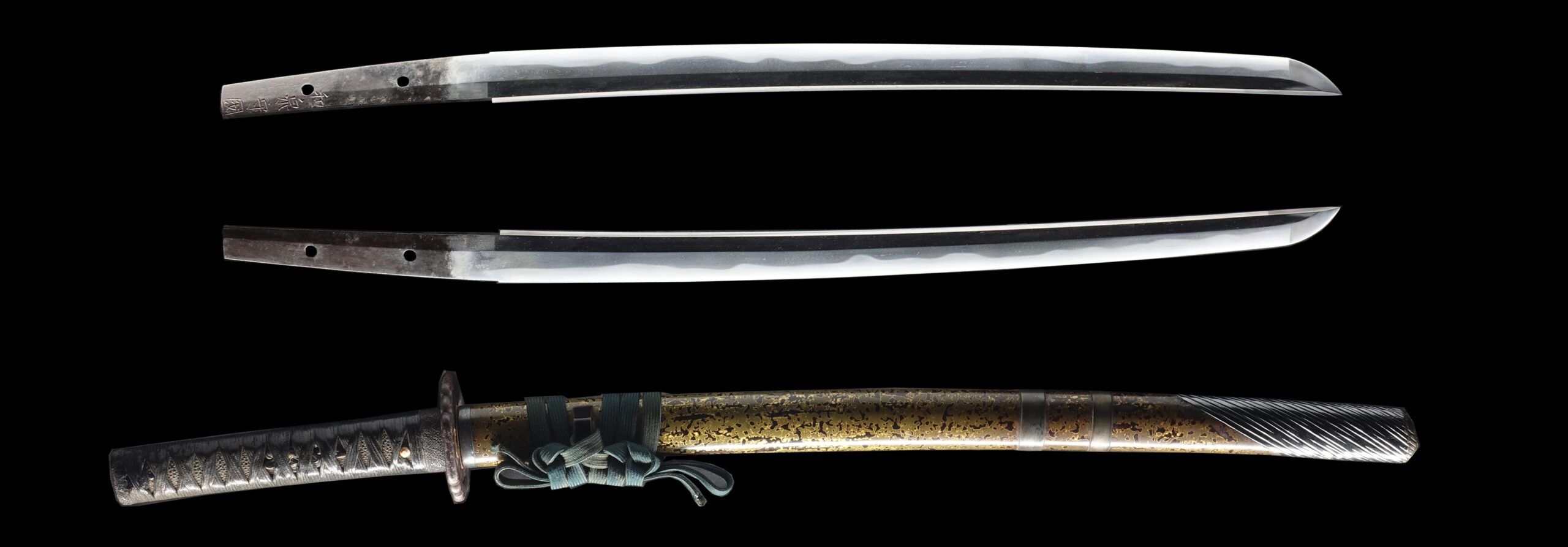
Hamon:
The crystalline structure which forms along the cutting edge of a blade as a result of the hardening process
Jimon(Jihada):
visible steel surface pattern created by folding and hammering during forging process

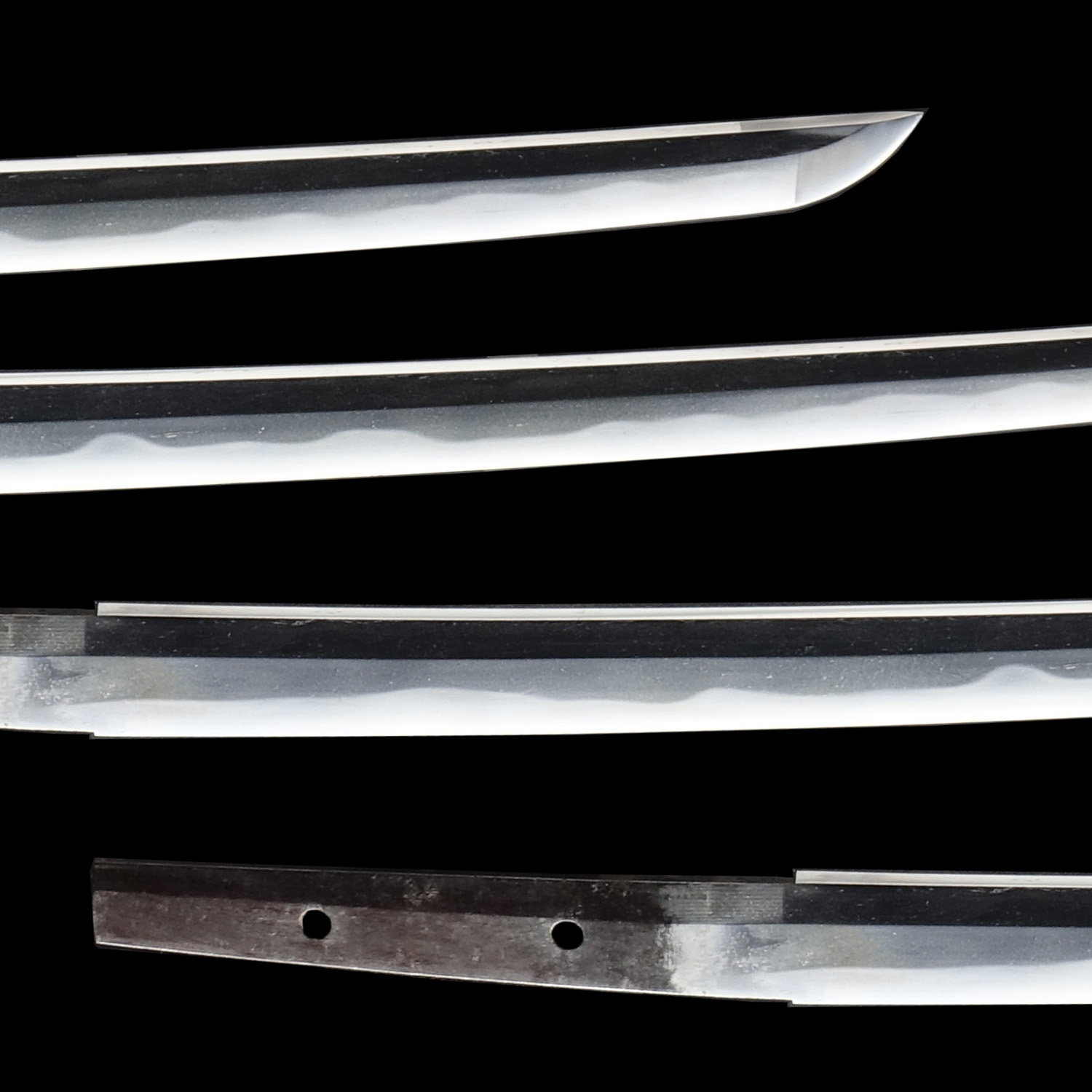
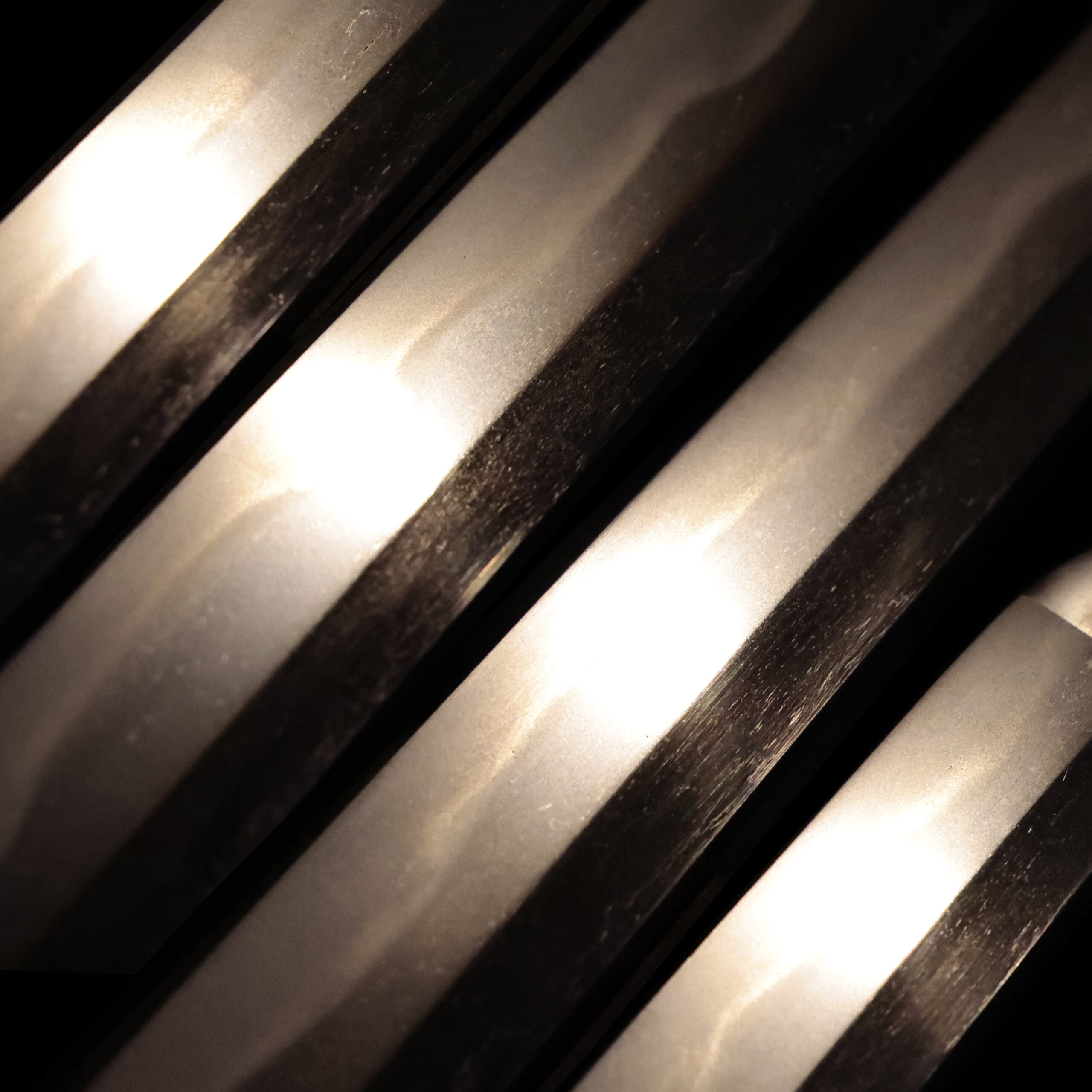
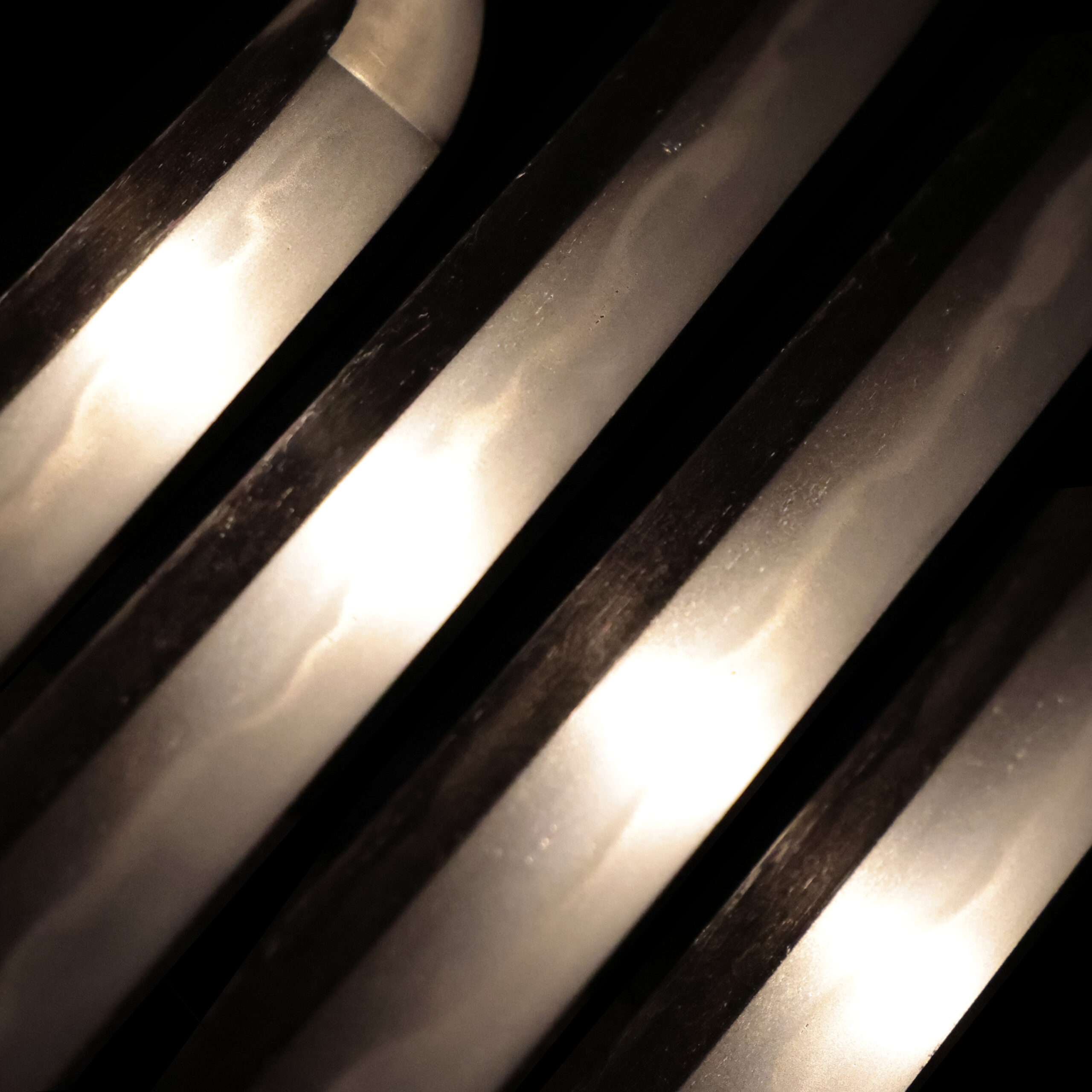
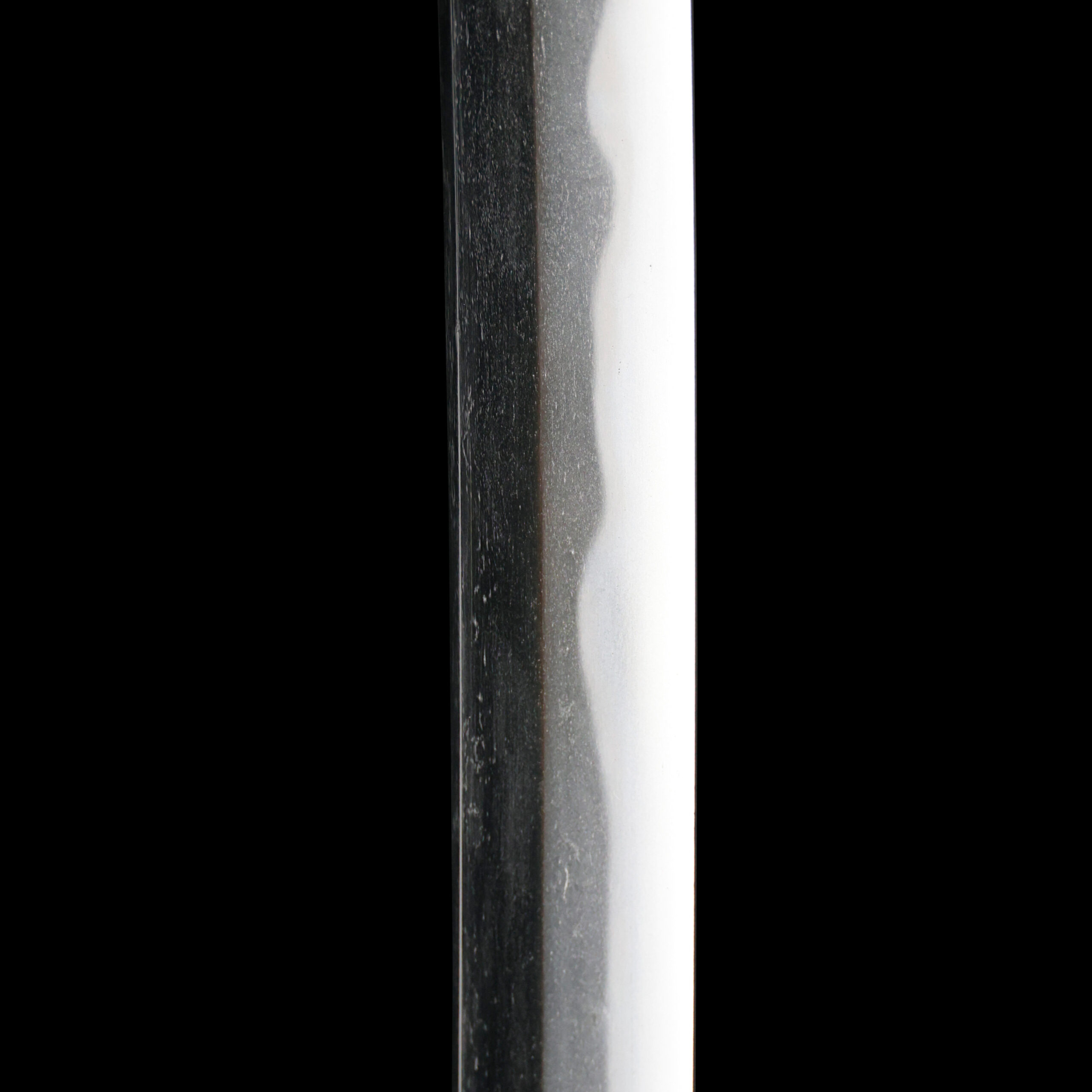
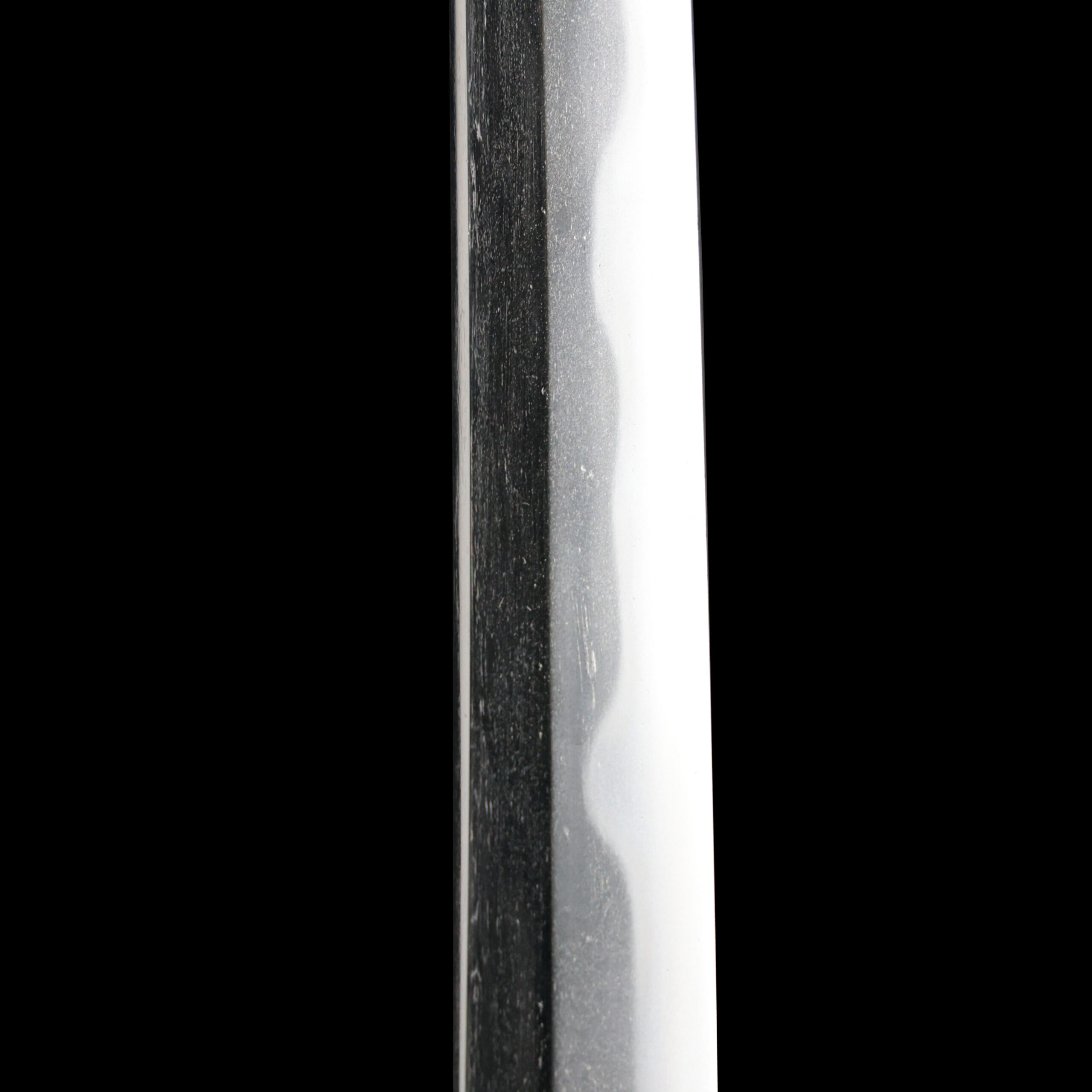
Kissaki:Kissaki is the tip of the Japanese sword.

Nakago:Nakago is the tang of the Japanese sword.
Japanese swordsmiths left the black rust on the tang because it prevents red rust while the tang is in its handle. And the discoloration of the tang was created over time, and it is a great indicator for a Japanese sword specialist to estimate when the sword was forged.
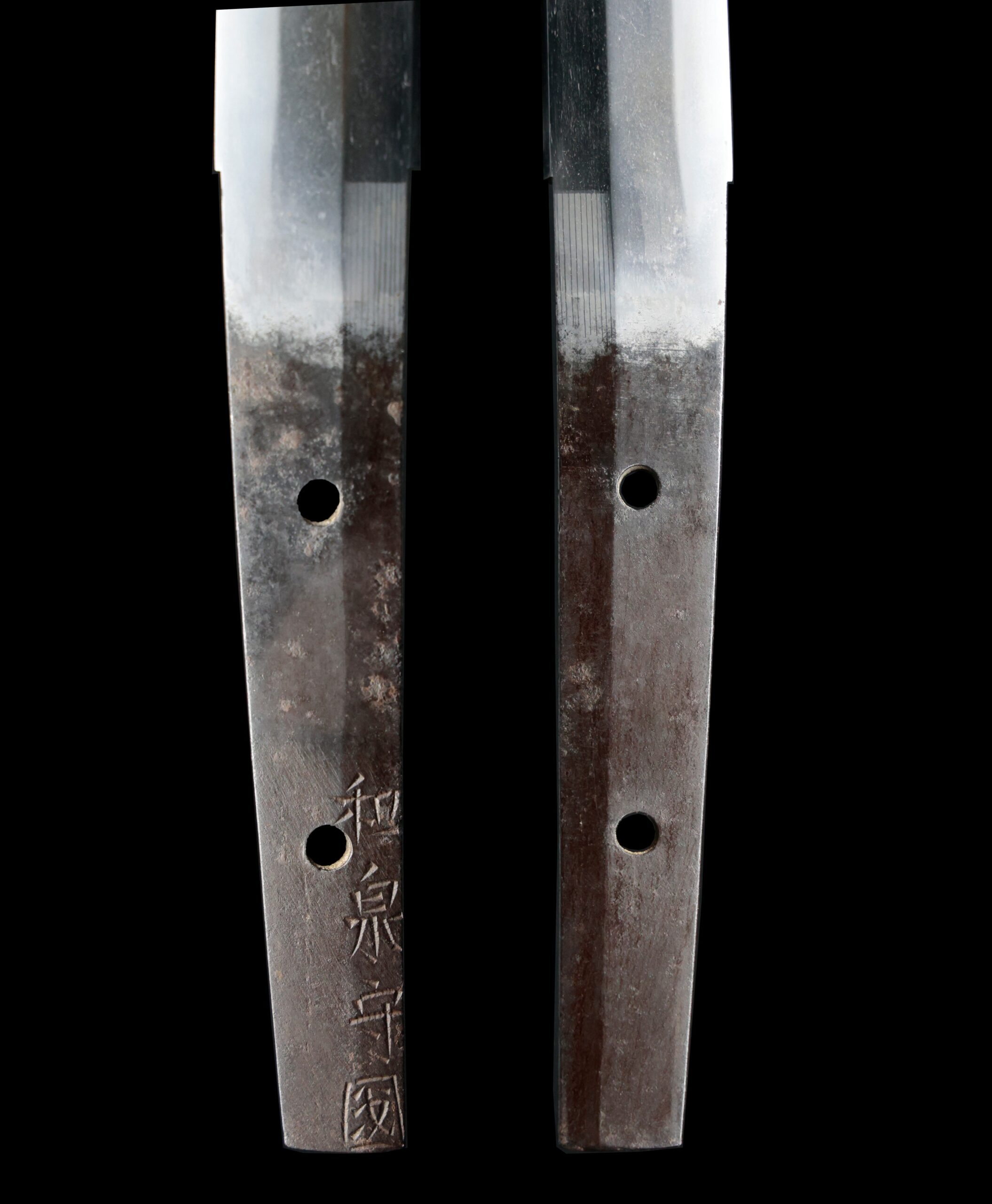
Koshirae:Koshirae is the mounting of the Japanese sword. There are several parts that consist of Koshirae such as Saya (Scabbard), Tsuka (Handle), Tsuba (Handguard).
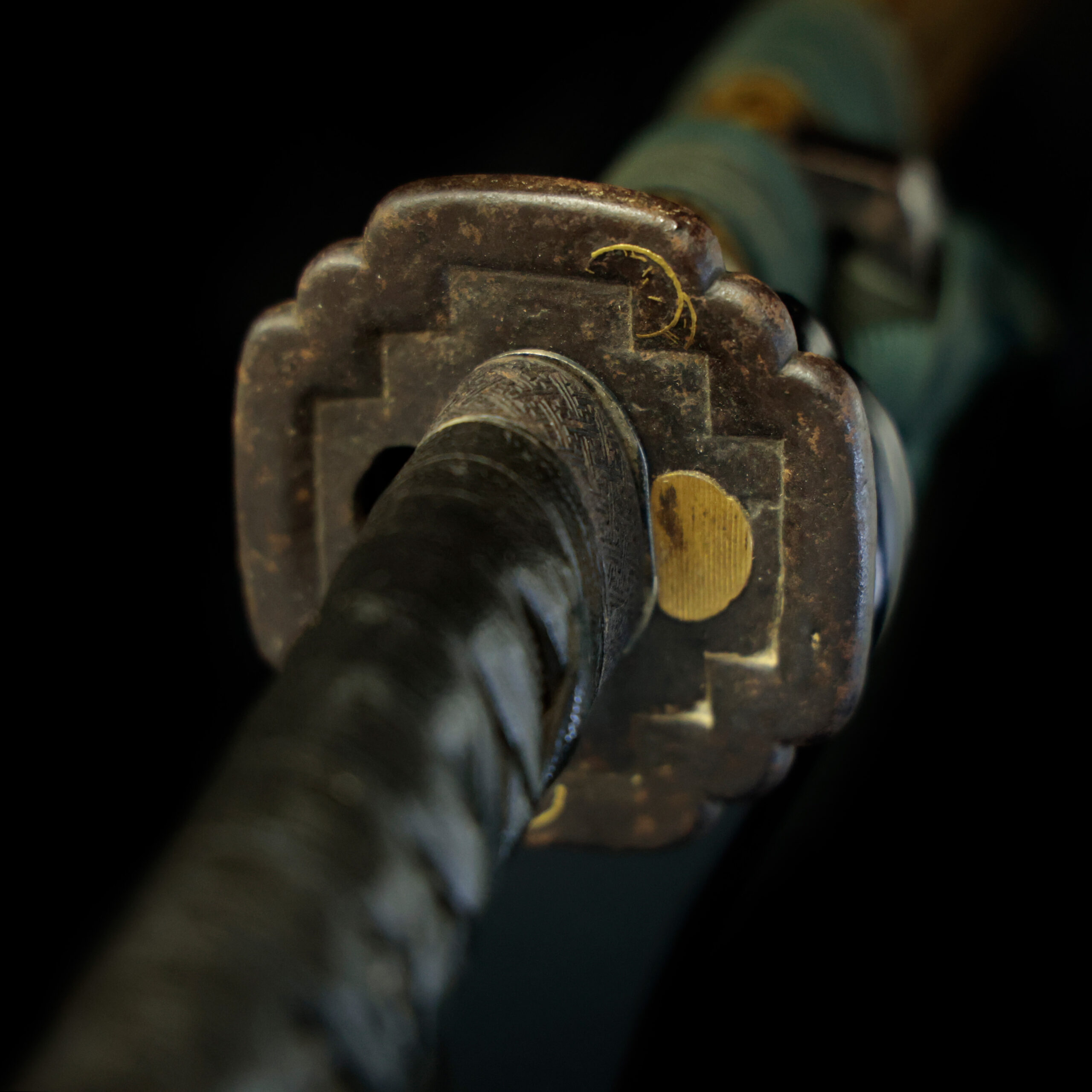
Fuchi-Kashira:A pair of matching sword fittings that cover the upper and bottom parts of its sword hilt.
This Fuchi Kashira is decorated with a geometric pattern called the Sayagata (紗綾形) design. The Sayagata (紗綾形) pattern is a design pattern of Manji (万字). Sayagata is one of the auspicious designs meaning “longevity and prosperity” because the pattern representing a large number such as 万, which means ten thousand, connected to each other is said to bring good luck. According to a theory, this motif was brought from a foreign country to Japan in the Momoyama period (1568-1600). In the Edo period, it was commonly used on figured satin and combined with designs that featured Japanese apricot blossoms, chrysanthemums, bamboos, or orchids.
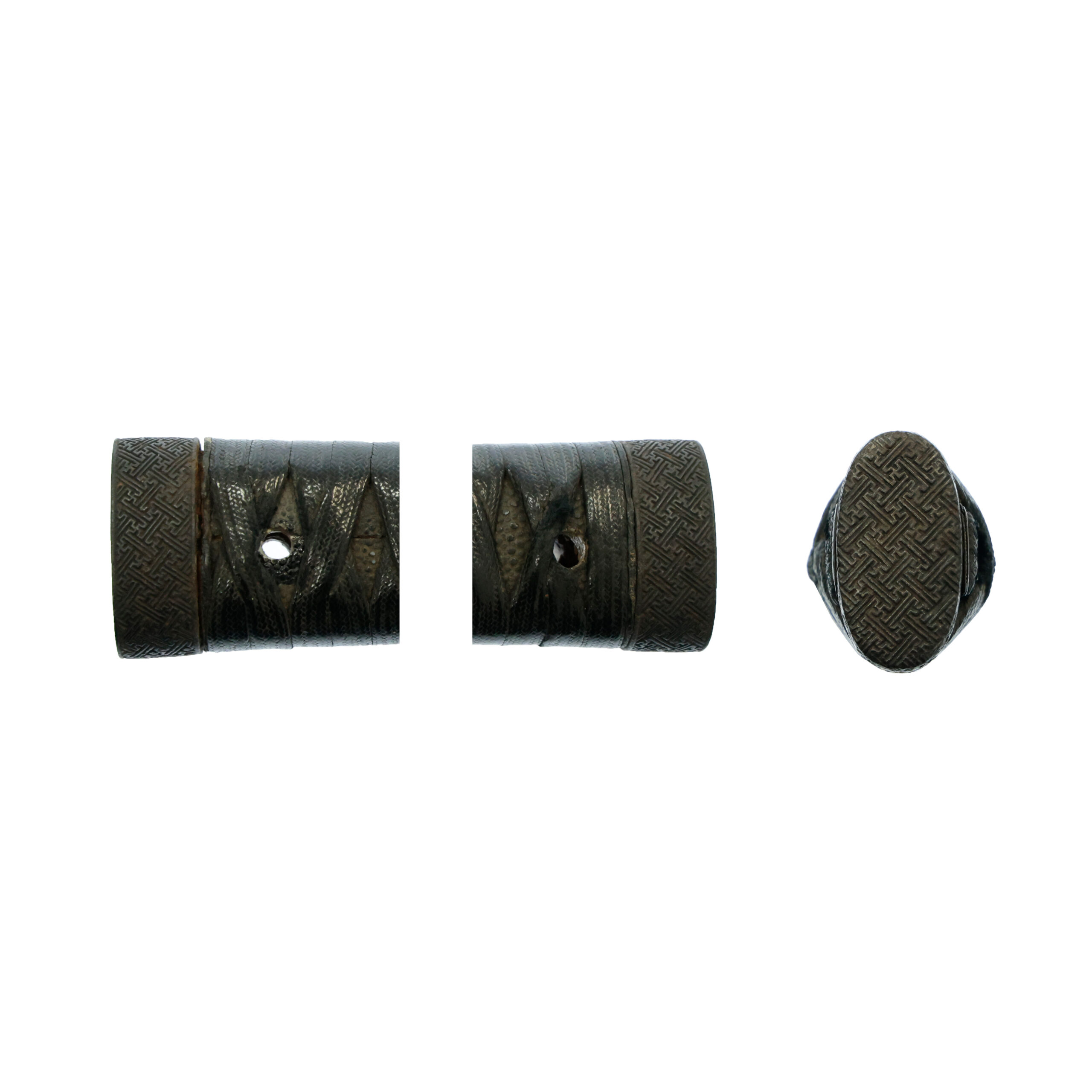
Tsuka and Menuki:Tsuka is the handle of the Japanese sword and Menuki is its decoration.
We estimate the motif of this Menuki is the Tonbo (蜻蛉, dragonfly). Dragonflies have been inhabited in Japan for a long time. Since they prey quickly, their heroic figure was sometimes the object of belief. The dragonfly was called the Kachimushi (勝ち虫, winning insect) during the Warring States period because of its fearless character. Dragonflies fly around fast to catch pests, moving only forward, not backward. Therefore, people thought the behaviors of this insect showed the spirit of Futaiten (不退転); it is a state of mind or a state in which a person has some conviction and does not give in to difficulties. It is very persuasive that Samurai warriors cherished this design as an auspicious motif because of the spirit that Samurai should be prepared for the battlefields. Not only for sword mountings, dragonfly patterns were also incorporated into various items such as helmets, armor, battle coats, etcetera.

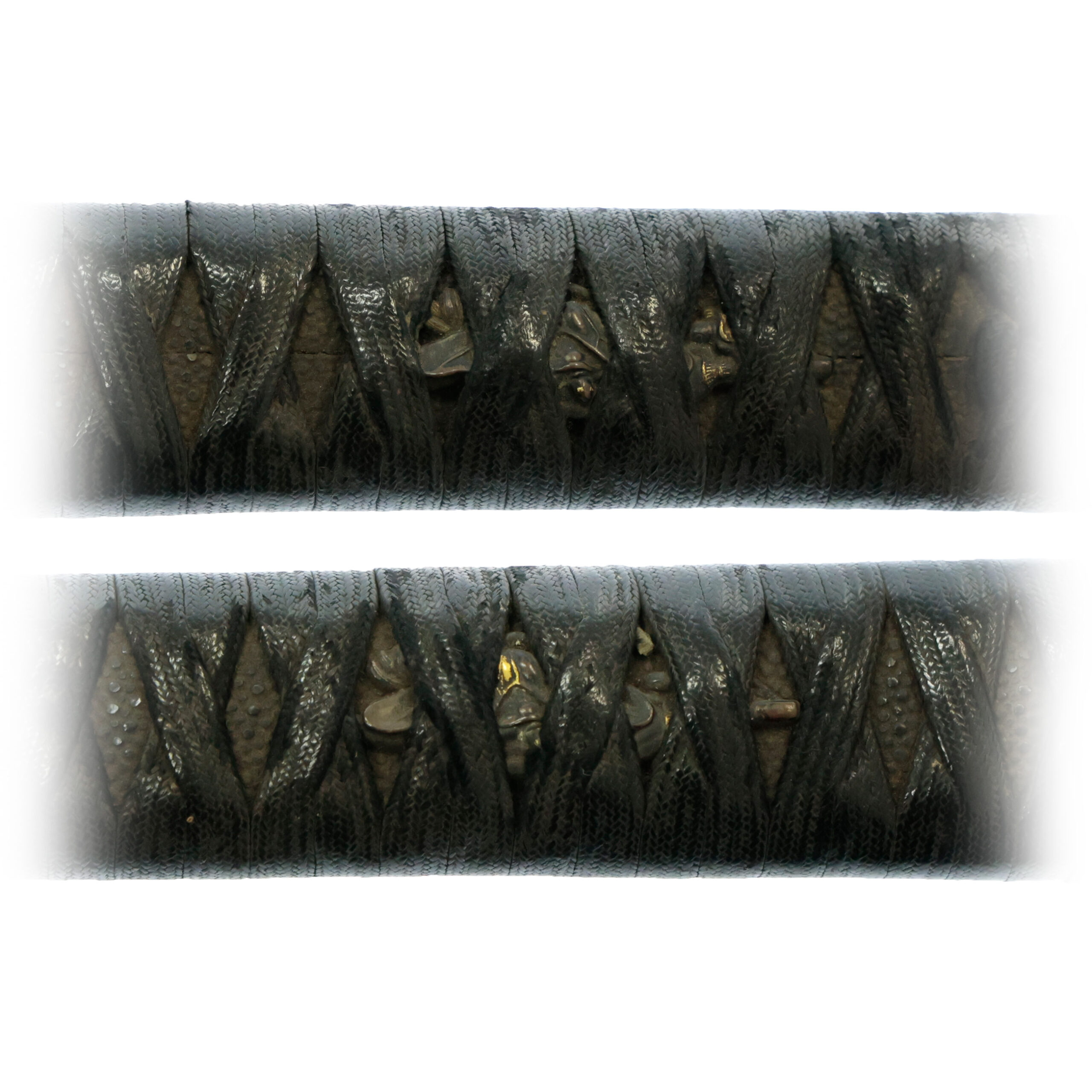
Tsuba and Habaki:Tsuba is the handguard for the Japanese Sword and Habaki is the equipment to make the blade not touch its scabbard inside. It prevents the blade from getting rusty and chipped.
This Tsuba has a unique shape. It seems that golden inlay called the Kin Nunome Zougan (金布目象嵌) was initially applied to some parts although it was partly faded. The Nunome Zougan (布目象嵌) is a technique in which vertical and horizontal stripes are attached to the surface that seems to be a texture of a fabric, and gold or silver foil is pasted on the surface to make it bite in and prevent it from peeling off. Although the golden color is partly faded, this inlay makes this Tsuba look decorative.

Saya: Saya is the scabbard for the Japanese sword.
It seems that this Saya is decorated with the Kin Mushikui Nuri (金虫食い塗). It is one of the lacquer techniques in which gold leaf is applied to an irregular undercoat with irregularities like insect bite marks, then lacquer is applied over the surface and polished. The appearance is similar to the works decorated with the Wakasa Nuri (若狭塗).

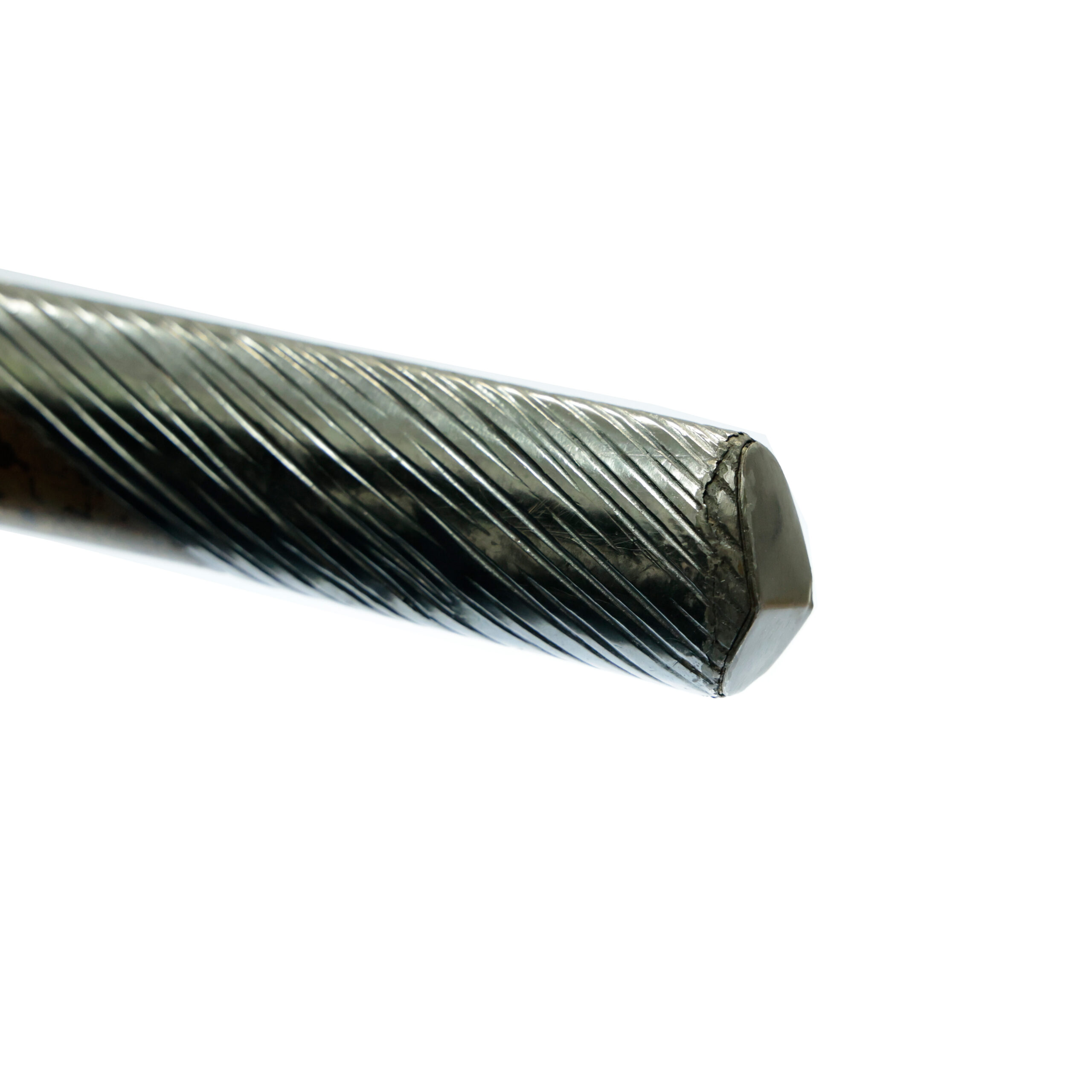
Authentication Paper:NBTHK Hozon Certificate for the blade (No. 3030352)
NBTHK, also known as Nihon Bijutsu Touken Hozon Kyokai (the Society for the Preservation of the Japan Art Sword), is one of the oldest Japanese sword appraising organizations in modern-day Japan. They authenticated the blade on December 14th in the 4th year of Reiwa (2022). They appraised it as Hozon Touken, the blade worth preserving for Japanese society. The purchaser will receive this original certificate as well. We can also translate what is written into English and make a PDF file for your record if you request.
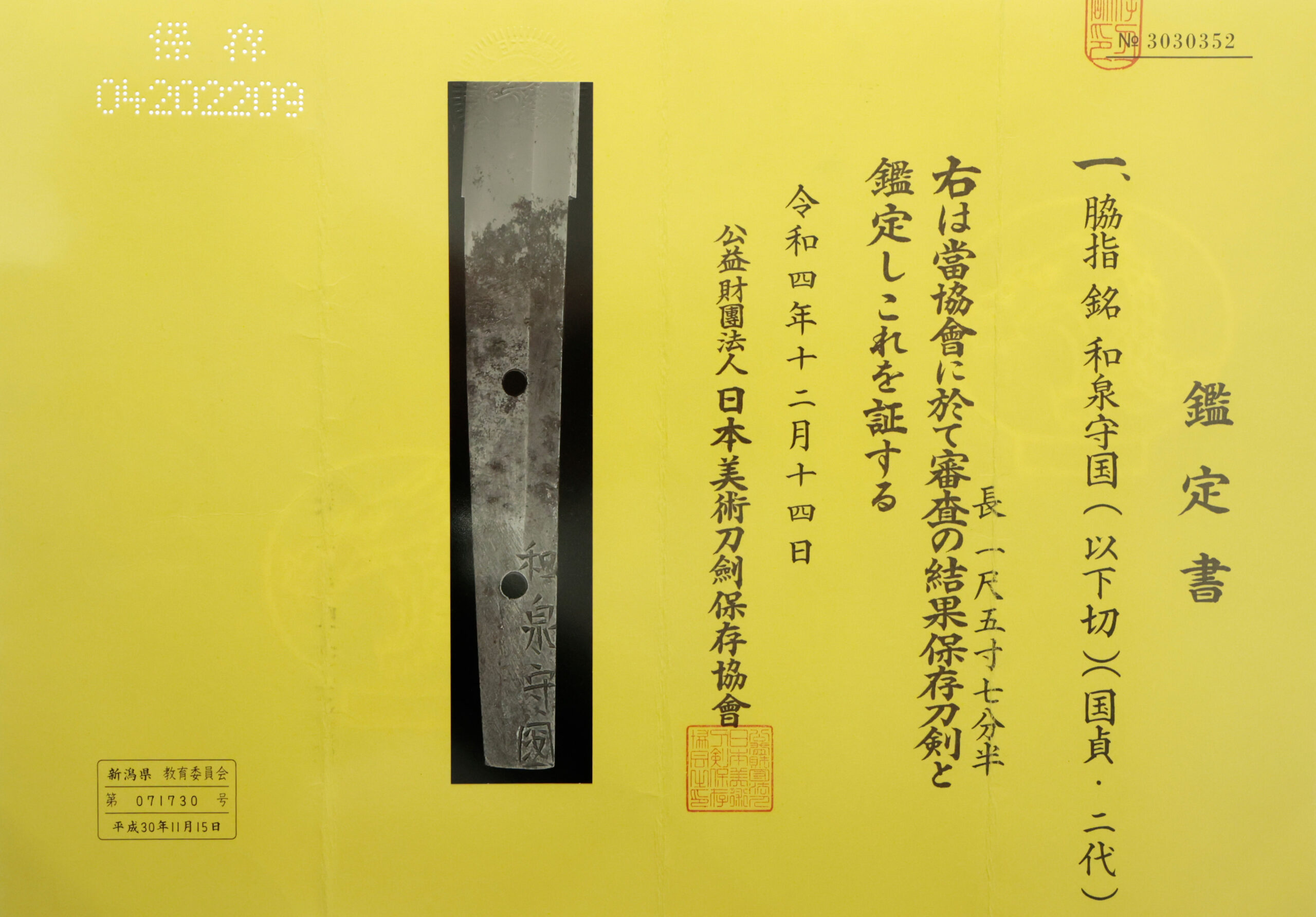
Registration Number : Niigata 71730
The Board of Education in Niigata prefecture issued a registration paper for this sword. It is called Jyu Hou Token Rui Torokusho (銃砲刀剣類登録証). Bunkacho (The Agency for Cultural Affairs) acknowledges a Japanese sword with this paper as a work of art.
The sword needs to be traditionally hand-forged and made of Tamahagane carbon steel to be registered in the system. With this paper, its owner in Japan can legally own an authentic Japanese sword. Based on this registration number, we will apply for its export permit.
This paper will need to be returned to the board of education when the sword is being shipped abroad, but you can receive a copy of it. An English translation of this registration paper is available on request.
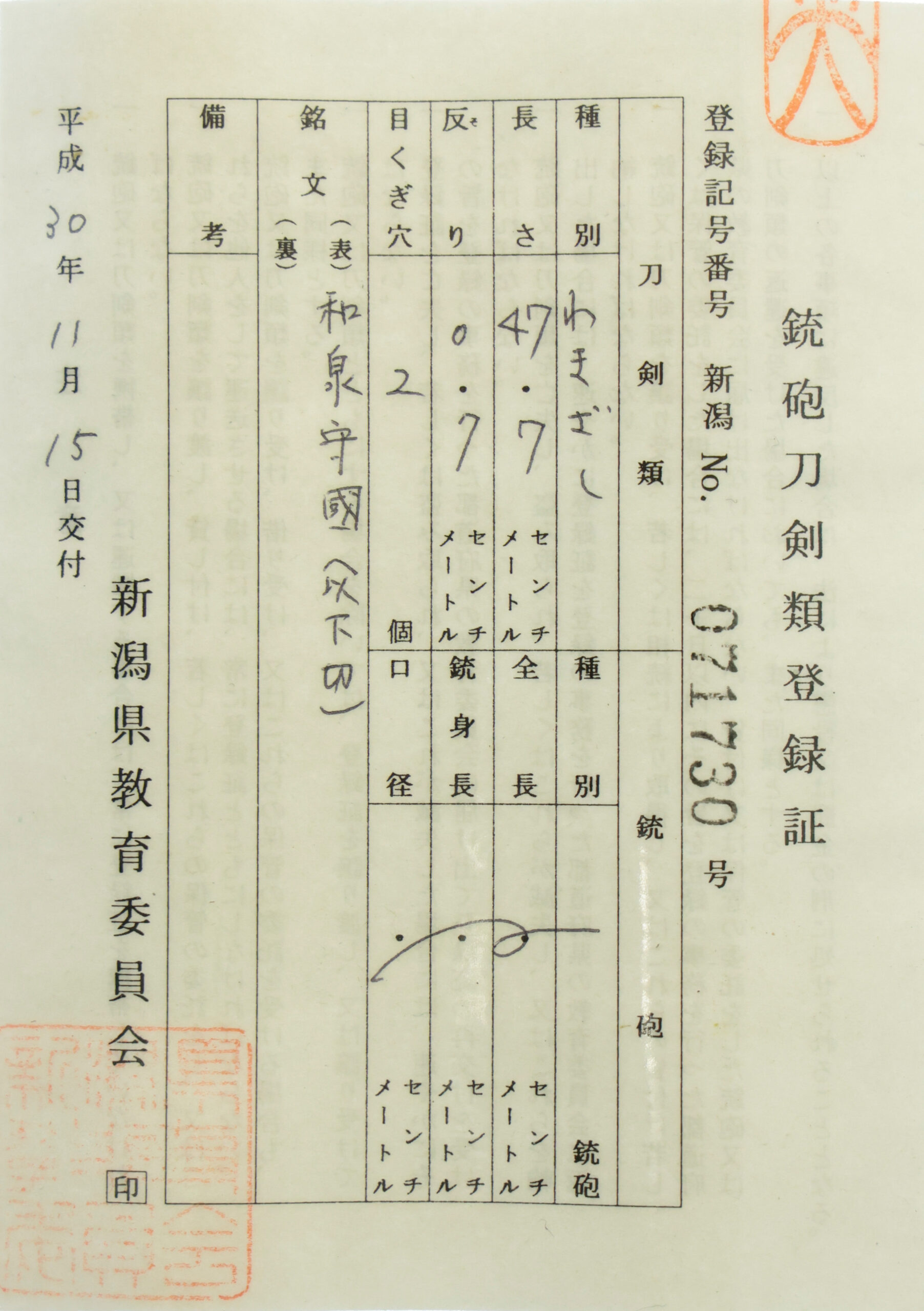

—————————————————————–
【About us】
Samurai Museum is located in Tokyo, Japan, exhibiting antique artifacts related to the Samurai history. Samurai Museum Shop is the place for those who are interested in Japanese culture and craftsmanship. We deal with antique Samurai swords/armor, traditional crafts made in Japan and so on.
【Japanese Sword& Export Process】
The Japanese swords we deal with are hand-forged edged swords made in Japan. It was made from the traditional carbon steel called TAMAHAGANE(玉鋼). Samurai Museum is familiar with the proper legal procedure for an antique/ authentic Japanese sword to be exported from Japan. We have sent more than 700 Japanese swords for the past few years (~2024) to amazing owners who appreciate its historical value.
Each Japanese sword is registered under the Agency for Cultural Affairs and the Board of Education in Japan. They issue a registration paper for each Japanese sword for its owner in Japan to legally possess it. The Japanese sword with its registration paper means it was traditionally hand-forged in Japan.
To legally export the sword from Japan to other countries, we will have to apply for its permit to the Agency for Cultural Affairs(Bunkacho) and return the original registration paper to the Board of Education. It normally takes around 2-4 weeks to receive this permit after submitting required documents. And we would like you to expect at least 1-1.5 months for your order to arrive at your given address after you ordered. For more detailed info, please click here.
It is allowed for residents in Japan to own authentic Japanese swords without a special license as long as they come with registration papers. Please feel free to contact us if you are a resident of Japan, whether temporarily or permanently. We will also assist you when you leave Japan and need to obtain the export permit.
【Payment Method】
We accept payment through Stripe (Credit card), PayPal, Apple Pay or ChromePay, all of which are secure payment methods. Also, you don’t need to make an account on Stripe for the checkout. If you prefer other payment method, please contact us. After confirming your payment, we will apply for an export permit. You may either pay in JPY, USD, AUD, CAD,EUR CHF or GBP. The price is set in Japanese Yen. Prices in other currencies are automatically calculated based on the latest exchange rate.

* If the amount is above 1 million JPY, Stripe or wire transfer will be the only options for payment.
【Shipping】
We have shipped authentic Japanese swords to the USA, Canada, Mexico, Germany , Belgium, France, Finland, UK, Hong Kong, Australia. If you don’t live in these countries and like to order, please contact us first before making a purchase. We offer Free International Shipping as long as we can send antique Japanese swords by EMS.
We normally ship by EMS(Express Mail Service) provided by Japan Post. We will send you a tracking number for your order as soon as we hand it to the post office. We will put 100 % insurance on the shipping document without any extra charge. Based on the total amount, there might be a duty tax or other fee for you to pay, depending on the countries. We use package cushioning to protect the item and put it in a PVC pipe, which is one of the most secure packages because of its durability.
It will normally takes 5-14 days for the item to arrive at your given address after we dispatch it. Time of delivery is estimated as accurately as possible by the carrier but does not take into account any delays beyond our control such as by inclement weather, post office holiday seasons.
* If you live in Australia and like to purchase an authentic Japanese sword, please click here to know the detail.
* If you live in the UK and like to purchase an authentic Japanese sword, please contact us first and click here to know the detail.

【Review】
Here is one of the reviews we received from a customer who purchased an authentic Japanese sword from us. For more reviews, please click here.
“My experience overall with the whole process was wonderful. I had many questions about the history and process to purchase these treasures. All my questions were answered very timely and complete. The staff is very knowledgeable and very well versed if any questions do arise.”
【How to make sure the condition】
Please keep in mind that what you are going to purchase is an antique item. We uploaded high resolution photos for you to check its condition thoroughly. If you like to see more photos with different angles, please feel free to contact us. We will be happy to send them to you so that you can make informed decision. It is essential for us to know that you are happy with your choice of a sword. and we are prepared to use the best of our ability to serve you.
【How To Contact Us】
Please contact us through email, Facebook Messenger or Live Chat if you have any questions. You can find each icon on the right side of the website. Please click one of them to reach us. We will reply to you within 1-2 business days.
【The Art of Nihonto (Japanese Sword)】
Samurai’s history is a profound, eloquent legacy of ancient Japanese warriors in which millions of people worldwide are being fascinated. If you like to find out the art of Nihonto, please click here.
【A Guide to Japanese Sword Maintenance】
After acquiring an genuine Japanese sword, it is also important to know how to take good care of it. Here is the special video for you. Mr. Paul Martin, Japanese sword expert, shows you how to give proper maintenance to your sword. By mastering how to clean the Japanese sword, its aesthetic beauty will last forever.
When you purchase a Japanese sword from us, you can get a Free Japanese sword maintenance kit. It comes with four tools(Choji Oil, Uchiko Whetstone Powder, Peg remover, Oil Applicator). By watching the video instruction above , you can enjoy learning how to maintain your Japanese sword while appreciating it. If you have any difficulty assembling the sword or cleaning the blade, you can feel free to contact us.
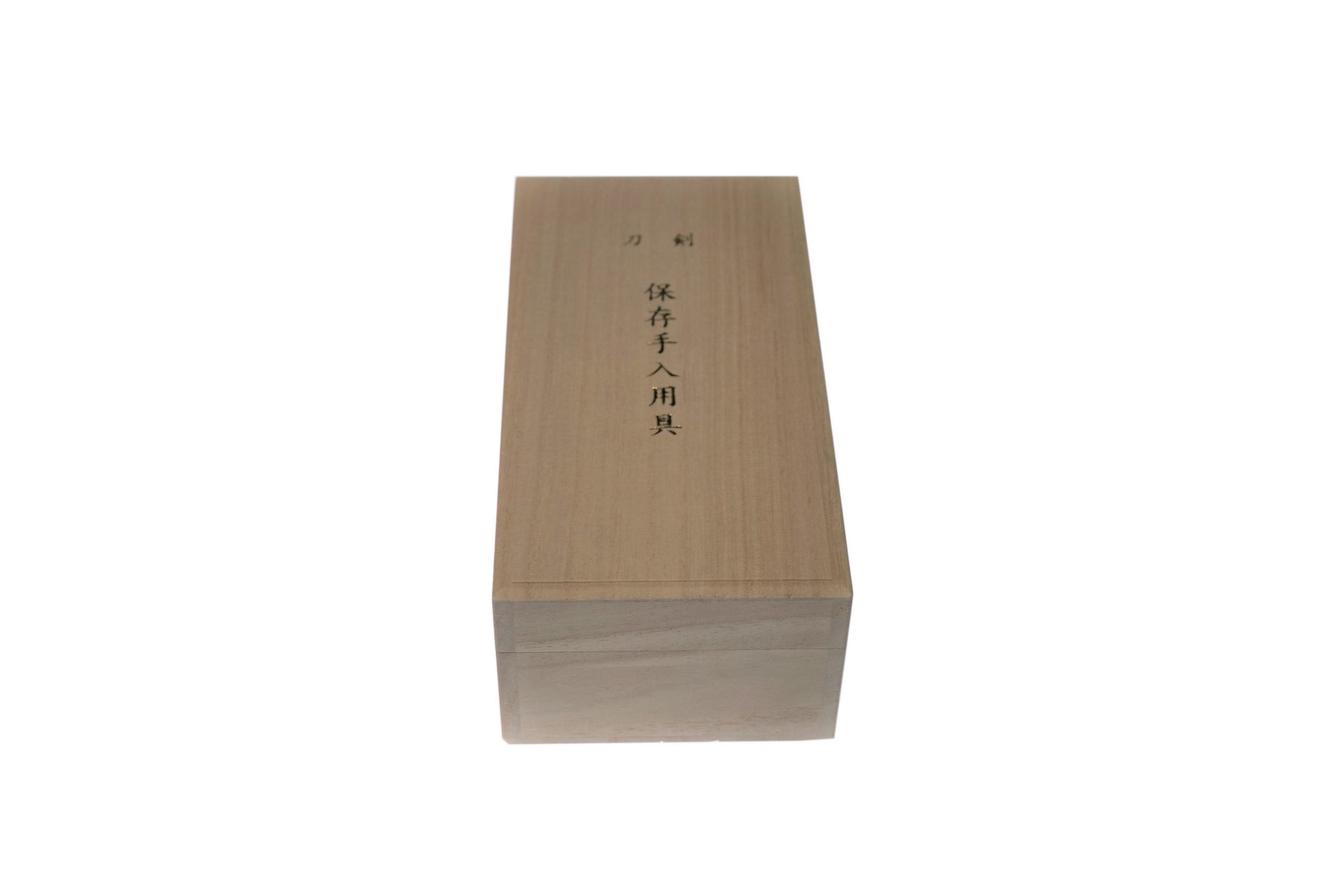
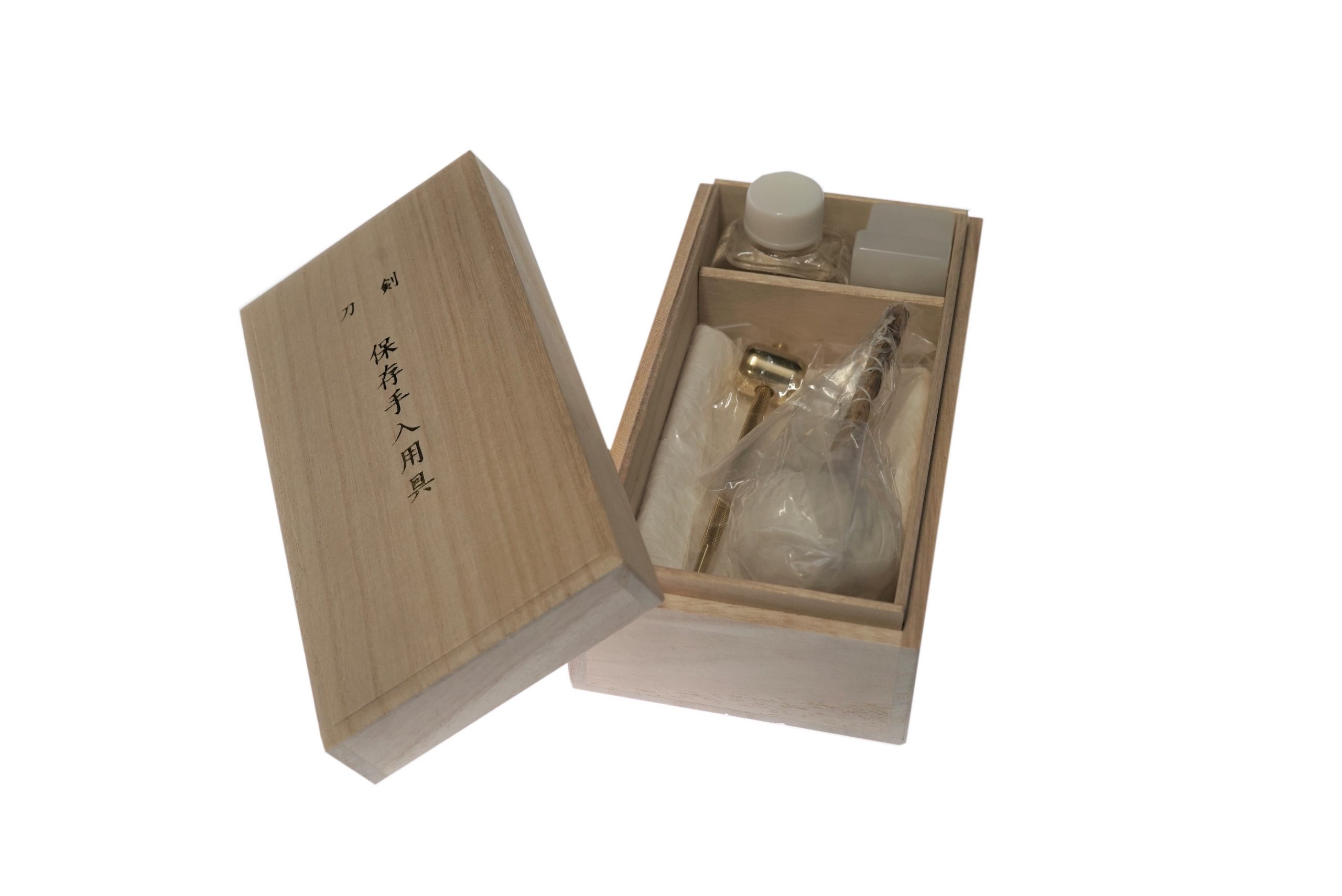
MORE ANTIQUE JAPANESE SWORD FOR SALE
SWORDS WITHOUT CERTIFICATES FOR SALE
LEARN JAPANESE SWORD TERMINOLOGY
Thank you for reading all the information on the page. If you have any difficulty choosing the right Japanese sword for you, we will be more than happy to help you find the one that speaks to you the most. Please feel free to contact us.

